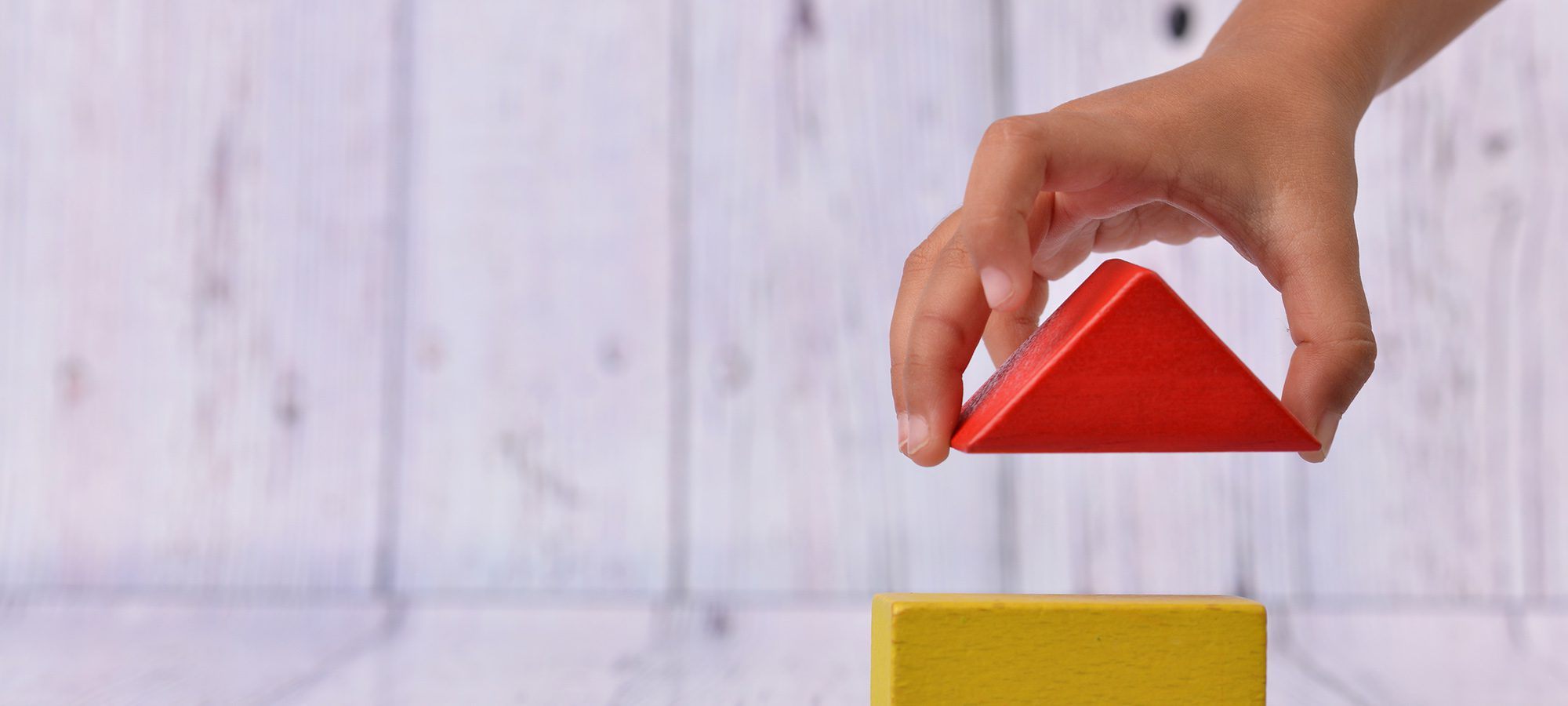Overview
Spatial thinking, or mentally manipulating information about the structure of the shapes and spaces in one’s environment, may be crucial for developing skills that support later science, technology, engineering, and mathematics (STEM) learning (Verdine, Golinkoff, Hirsh-Pasek, & Newcombe, 2014). Our research explores spatial skill development at a young age through means such as spatial assembly tasks, block building, and learning about geometric forms. We also study how early spatial skills impact later mathematics and academic achievement (Verdine, Chang, Filipowicz, Golinkoff, Hirsh-Pasek, & Newcombe, 2014; Verdine, Golinkoff, Hirsh-Pasek, & Newcombe, in press). Children’s first acquaintance with spatial forms like triangles often comes from toys, and in 2016, from apps.
Geometric Shapes & Spatial Language
The Input to Learning about Geometric Shapes and Spatial Language
How do children learn about the definitional properties of geometric shapes? That is, how do they uncover what makes a triangle a triangle – 3 sides and 3 corners? The shapes appearing in children’s toys (e.g., shape sorters), books, and interactive digital content, are limited to a small number of shape categories. These also show mostly canonical shape types (e.g., equilateral triangles seen on its base) and very few non-typical variants within those categories. Shapes are typically labeled with only a single generic identifier (e.g., triangle) and few materials provide explicit definitions, geometric adjectives (e.g., scalene), or identify similarities and differences across shapes. Our work suggests a need for more thoughtful design of shape learning materials to provide variety and evoke discussion of their defining properties. As the traditional toys of the past are quickly being replaced with electronically “enhanced” toys, it is important to understand how these changes impact parent–child interactions, especially in light of the evidence that the richness and variety of these interactions have long-term effects on diverse areas of cognition.
Ferrara, Shallcross, Hirsh-Pasek, Golinkoff, and Newcombe (2011) showed that in the context of assembling block structures, parents use very little spatial language (e.g., shape names, words like through and large), although more than they use in play without blocks. It is also the case that electronic shape toys (at least the one we tested) prompted a reduced amount of spatial language from parents compared to traditional shape toys (a shape sorter) (Zosh, Verdine, Filipowicz, Golinkoff, & Hirsh-Pasek, 2015). Thus, young children must be spending time inducing the properties of geometric forms.
Previous work suggests that preschoolers have fragmentary knowledge of shapes and that defining properties of geometric forms are not understood until well into elementary school. Our research shows that at 25 months, children knew very few shape names, including those for the standard shapes that they are frequently confronted with (canonical shapes). By 30 months, however, children have acquired more shape names and are beginning to apply them to some of the less typical instances of the shapes (a right triangle rather than an equilateral one, for instance) (Verdine, Lucca, Golinkoff, Hirsh-Pasek, & Newcombe, 2016). With an increasing emphasis on geometry in the Common Core Standards for mathematics, promoting an early understanding of geometric shapes has become a crucial aspect of preparing young children for school.
Spatial Learning Appears to Fuel Math Learning
Experiences with spatial toys such as blocks, puzzles, and shape games, and the spatial words and gestures they evoke from adults, have a significant influence on the early development of spatial skills. Spatial skills are important for success in science, technology, engineering, and mathematics (STEM) fields and are related to mathematics performance as early as age 3 (Toub, Verdine, Hirsh-Pasek & Golinkoff, under review). Due to the amount of time that many young children spend with their parents, making parents aware of the importance of spatial skills may be paramount to increasing children’s readiness for mathematics. Additionally, increasing access to a preschool “spatial education” both in and out of school constitutes a safe bet for fueling school readiness and igniting long-term performance gains in STEM-related fields (Verdine, Golinkoff, Hirsh-Pasek, & Newcombe, 2014).
The Test of Spatial Assembly (TOSA) was created specifically as an assessment for 3-year-olds. Our research has used the TOSA to investigate links among spatial skills, executive functioning (EF), and mathematical skills earlier than previously possible. We found that EF is an important predictor of math performance, and that spatial skills uniquely predict mathematics as well. Our findings indicate that both spatial and EF skills are part of an important foundation for mathematics performance and may represent pathways for improving school readiness for mathematics (Verdine, Irwin, Golinkoff, & Hirsh-Pasek, 2014).







